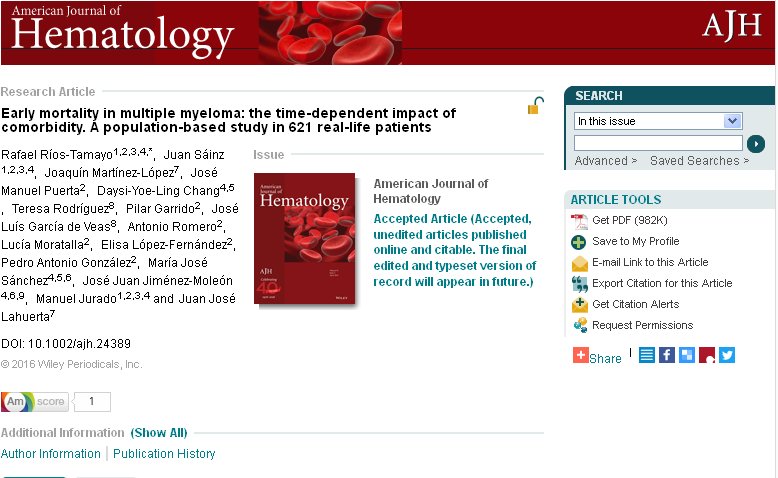
Multiple myeloma is a heterogeneous disease with variable survival; this variability cannot be fully explained by the current systems of risk stratification. Early mortality remains a serious obstacle to further improve the trend towards increased survival demonstrated in recent years. However, the definition of early mortality is not standardized yet. Importantly, no study has focused on the impact of comorbidity on early mortality in multiple myeloma to date. Therefore, we analyzed the role of baseline comorbidity in a large population-based cohort of 621 real-life myeloma patients over a 31-year period. To evaluate early mortality, we performed a sequential multivariate regression model at two, six and twelve months from diagnosis. We demonstrated that comorbidity has an independent impact on early mortality, which is differential and time-dependent. Besides renal failure, respiratory disease at two months, liver disease at six months, and hepatitis virus C infection at twelve months, were respectively associated with early mortality, adjusting for other well-established prognostic factors. On the other hand, the long-term monitoring in our study points out a modest downward trend in early mortality over time. This is the first single institution population-based study aiming to assess the impact of comorbidity on early mortality in multiple myeloma. We suggest that early mortality should be analyzed at three key time points (two, six and twelve months), in order to allow comparisons between studies. Comorbidity plays a critical role in the outcome of myeloma patients in terms of early mortality. This article is protected by copyright. All rights reserved.


